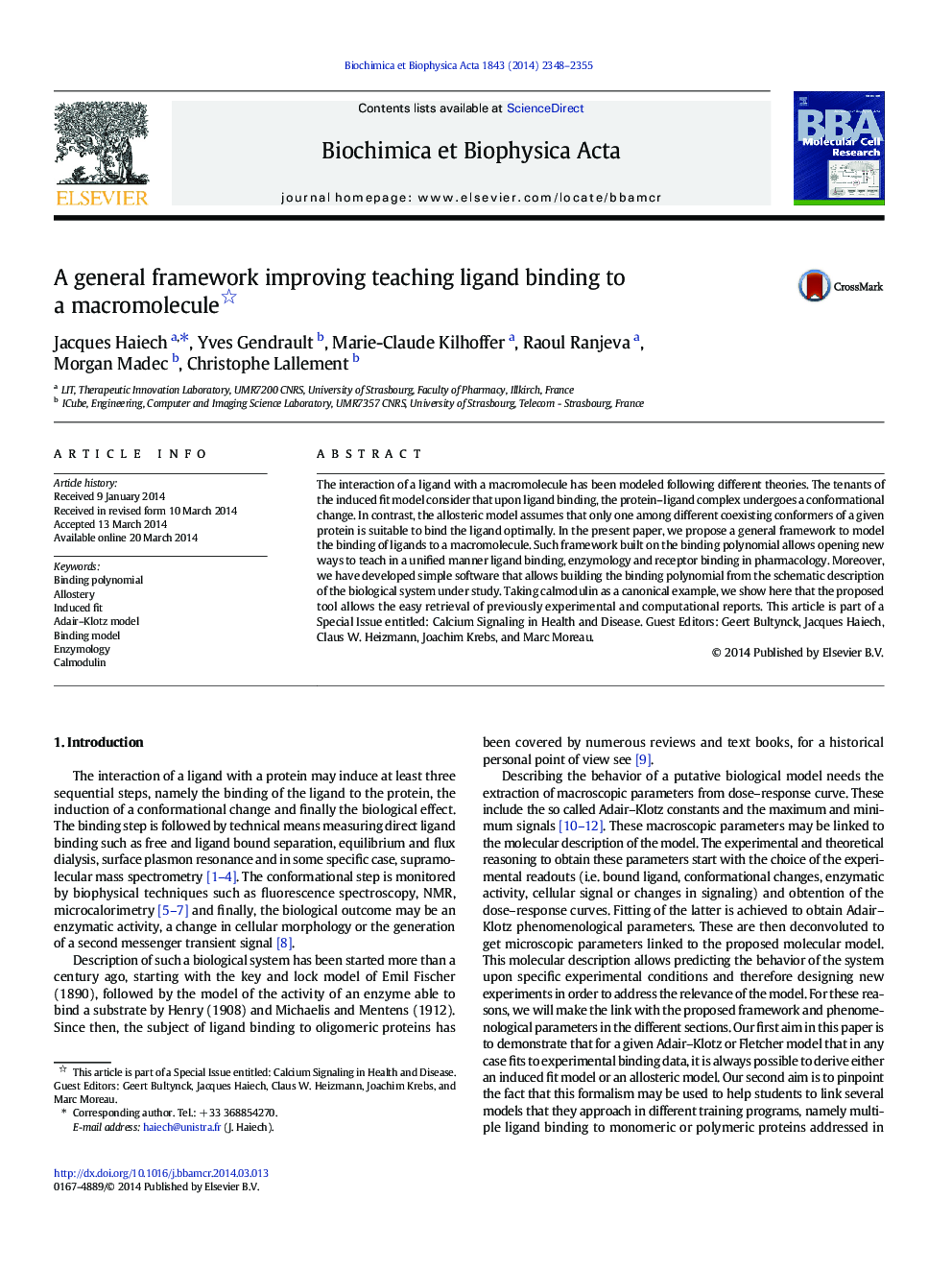| Article ID | Journal | Published Year | Pages | File Type |
|---|---|---|---|---|
| 1950563 | Biochimica et Biophysica Acta (BBA) - Molecular Cell Research | 2014 | 8 Pages |
•Generalized equation to model binding of any number of ligands to any number of sites on a protein•Generalized equation to model dose–response curve from any biophysical response•Unified framework that eases teaching ligand binding to undergraduate student•Toolbox to generate binding polynomial from a description of a biological system
The interaction of a ligand with a macromolecule has been modeled following different theories. The tenants of the induced fit model consider that upon ligand binding, the protein–ligand complex undergoes a conformational change. In contrast, the allosteric model assumes that only one among different coexisting conformers of a given protein is suitable to bind the ligand optimally. In the present paper, we propose a general framework to model the binding of ligands to a macromolecule. Such framework built on the binding polynomial allows opening new ways to teach in a unified manner ligand binding, enzymology and receptor binding in pharmacology. Moreover, we have developed simple software that allows building the binding polynomial from the schematic description of the biological system under study. Taking calmodulin as a canonical example, we show here that the proposed tool allows the easy retrieval of previously experimental and computational reports. This article is part of a Special Issue entitled: Calcium Signaling in Health and Disease. Guest Editors: Geert Bultynck, Jacques Haiech, Claus W. Heizmann, Joachim Krebs, and Marc Moreau.
